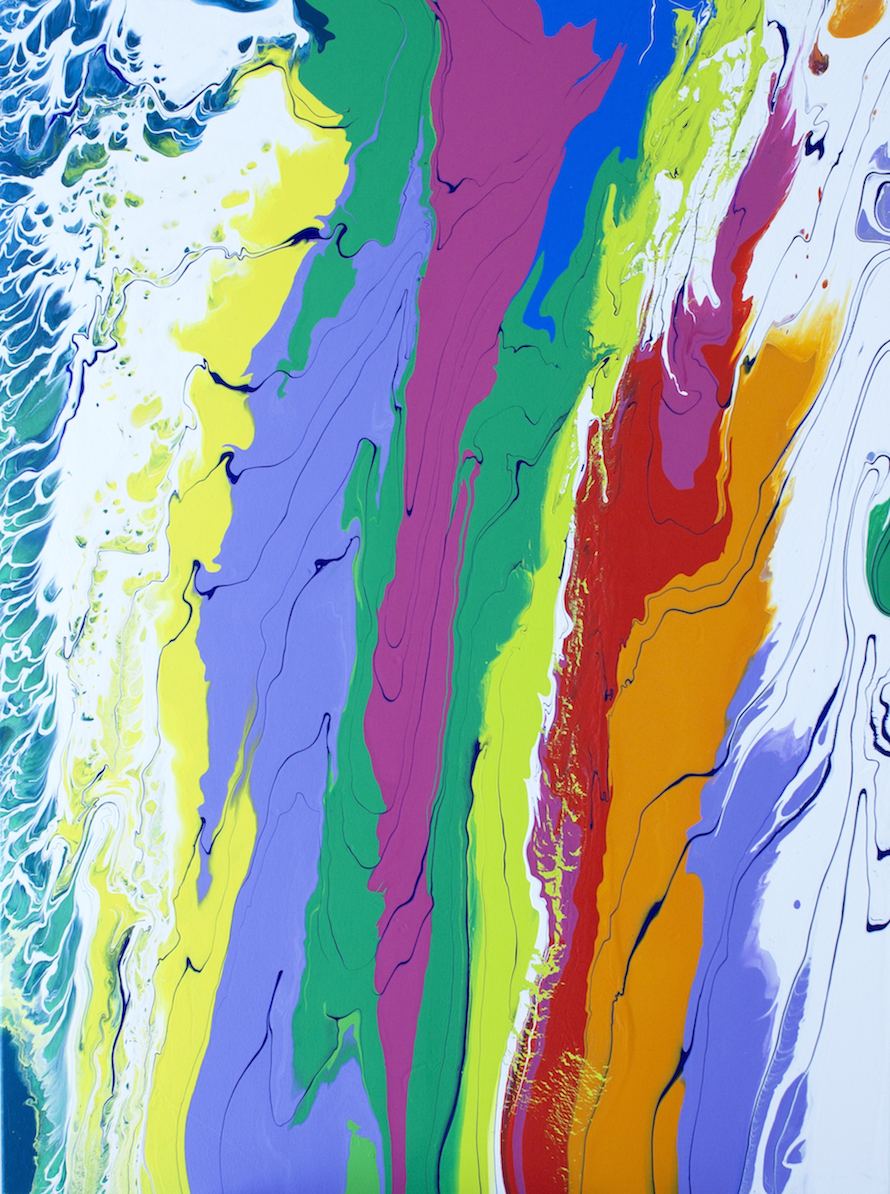Melt Your Television
A young abstract painter from San Francisco explains why Instagram is the best art critic of all.

Interview by Rosecrans Baldwin
The Morning News: I feel like I’m flipping the dial on my parents’ old TV with rabbit ears, all the color and pop. Where did this series begin?
Jenny Sharaf: I love color, so it feels pretty natural for my palette to be loud and include neons. The work at Johansson Projects and my recent paintings are a continuation of my work at the Mills MFA program. In school, I was focused on new media work—digital prints, video installations, etc. When I went back to painting heavily, the psychedelic and TV aesthetic somehow translated.
TV has always been an influence on my work and my life, but I’m not sure I have the language to explain how it comes through in my abstract paintings. I grew up in Los Angeles and my parents were both in the television industry. Continue reading ↓
Sharaf’s paintings are on view at Johansson Projects, as part of “Alicia McCarthy + Jenny Sharaf,” through Aug. 16, 2014. All images used with permission, all rights reserved, copyright © the artist.








Interview continued
TMN: You work in several media. What prompts you to switch?
JS: My studio practice is very impulsive and intuitive. Usually I’ll just follow my nose, so to speak, and let one idea lead to the next. Lately, I have been mostly painting, although video and print are starting to come back in to my practice. Honestly, I try not to think too much about it and let the processes unfold.
TMN: What’s the last great movie you saw?
JS: I’ve been watching the Gerhard Richter documentary (Gerhard Richter Painting) on repeat. He keeps me company in the studio and is a calming force and says poignant things that make sense of everything for a moment.
TMN: Who’s your best critic?
JS: I feel like Instagram is the ultimate art critic. There’s certain people that, if they like my work, it will absolutely make my day. Getting instantaneous feedback can sometimes affect my painting decisions too.
TMN: Can you see a difference in paintings made when you’re using Instagram and paintings when you’re not?
JS: Instagram doesn’t directly affect the paintings, but it feels like a community of artists talking to each other. Sometimes it’s nice to have that in the studio.
TMN: When are you, as an artist, at your most doubtful?
JS: The way that I paint feels very risky and brings out a real vulnerable side. There’s always a moment of doubt, hopefully followed by a confident action. It keeps things interesting and totally unpredictable.
TMN: What was the first piece of art you sold?
JS: My aunt has a gallery in Hudson, NY, and she would let me sell little drawings and things once in a while from the time I was maybe 15. It was mostly through my aunt and some of my parents’ creative friends that I saw examples of creative people who were professional and entrepreneurial.
